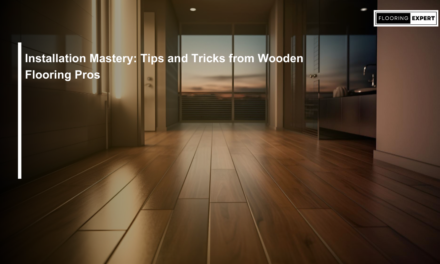Laminate flooring has become a popular choice for homeowners seeking the perfect blend of affordability, durability, and aesthetics. However, achieving a flawless installation requires more than just the right materials—it demands precision, attention to detail, and expert techniques. In this article, we delve into the expert strategies and techniques that ensure a flawless installation of laminate flooring, transforming any space into a stunning showcase of craftsmanship.
Thorough Preparation:
Before embarking on the installation process, thorough preparation of the subfloor is paramount. This involves:
- Inspection and Repair: Inspect the subfloor for any signs of damage or unevenness. Address any issues such as cracks, dips, or protrusions before proceeding.
- Cleaning: Ensure that the subfloor is clean, dry, and free of debris, dust, and moisture. Any residual substances can compromise the integrity of the laminate installation.
Acclimation of Materials:
Proper acclimation of the laminate flooring materials is essential to prevent warping, buckling, or gaps post-installation.
- Allow the laminate flooring to acclimate to the environment of the room for at least 48 hours before installation.
- Store the flooring boxes horizontally in the room where they will be installed, maintaining a temperature of 65-85°F (18-29°C) and relative humidity of 30-50%.
Precision Measurement and Planning:
Achieving a seamless and aesthetically pleasing installation hinges on precise measurement and meticulous planning.
- Measure the dimensions of the room accurately, taking into account any irregularities or obstacles such as doorways, corners, or protrusions.
- Plan the layout of the flooring carefully to ensure a balanced and symmetrical appearance, minimizing the need for awkward cuts or transitions.
Proper Underlayment Installation:
The underlayment serves as a crucial layer between the subfloor and the laminate flooring, providing cushioning, sound absorption, and moisture resistance.
- Roll out the underlayment across the entire floor area, ensuring that seams are properly aligned and secured with adhesive or tape.
- Trim any excess underlayment along the edges of the room, leaving a small gap to accommodate expansion.
Precision Cutting and Installation:
Achieving precise cuts and seamless joints is key to a professional-looking installation.
- Use a high-quality laminate flooring cutter or saw to make accurate cuts, ensuring smooth edges and minimal chipping.
- Install the laminate planks starting from the longest, straightest wall in the room, working towards the opposite wall.
- Maintain a consistent expansion gap of 1/4 to 3/8 inch (6 to 10 mm) around the perimeter of the room to allow for natural expansion and contraction of the flooring.
Careful Handling and Installation Techniques:
Handle the laminate flooring planks with care to avoid damage during installation.
- Use tapping blocks and pull bars to ensure tight and secure joints between planks, minimizing gaps and unevenness.
- Avoid over-tightening the joints, as this can cause buckling or damage to the locking mechanisms.
Conclusion:
Mastering the art of installing laminate flooring requires a combination of skill, precision, and attention to detail. By following expert techniques such as thorough preparation, precise measurement, proper acclimation, and careful installation, homeowners can achieve a flawless finish that enhances the beauty and functionality of any space. With the right tools, materials, and expertise, laminate flooring installation becomes not just a task, but a true testament to craftsmanship and quality.





